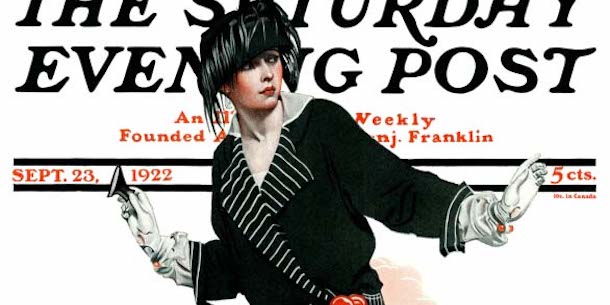The dramatic changes for women in the 1920s – the right to vote, the spread of middle-class affluence, and a rejection of Victorian mores – vividly influenced fashion.

Neysa McMein
May 29, 1920
This bi-corn hat style was popular in the early 1920s and this woman wears a particularly dramatic version of it. Artist Neysa McMein often drew confident, modern women for McCall’s, The Saturday Evening Post, Collier’s, and many others. This was her 28th cover out of 62 she painted for the Post. McMein was quite the modern woman herself; for her volunteer work in Europe during World War I, she was made an honorary non-commissioned officer in the Marine Corps, one of only three women to receive the honor. When she painted this cover, women had not yet won the right to vote; that wouldn’t occur until August of 1920.

By Paul Stahr
September 10, 1921
Paul Stahr painted five covers for the Post throughout the 1920s, all featuring attractive women. This girl’s middy blouse (named after midshipmen from whom the look was derived) was a popular fashion in the ‘20s, inspired by World War I and co-opted by fashion designer Coco Chanel. The nautical look never really went out of style, but seemed to have its strongest influence around World Wars I and II.
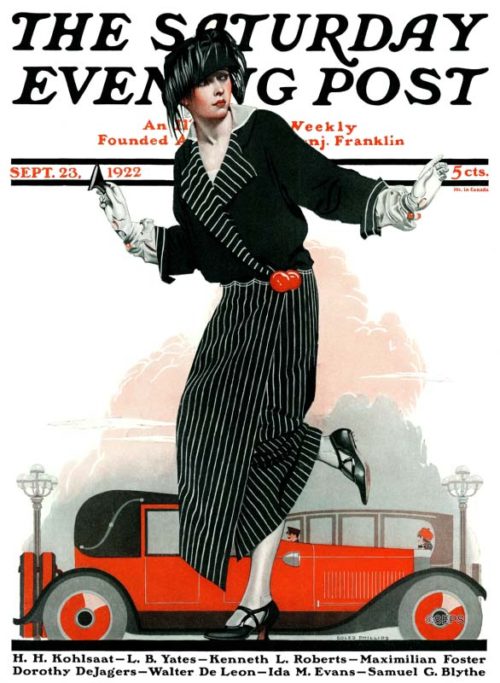
By Coles Phillips
September 23, 1922
Here, painter Coles Phillips depicts the dropped waist and above-the-ankle length that defined women’s fashion in the 1920s. Phillips made an excellent living with his illustrations, but he was often critical of other artists. He called the art of Norman Rockwell too commercial and bland. His comments didn’t bother Rockwell, who responded, “I didn’t lose any sleep over his criticisms. He didn’t like Howard Pyle. Or Rembrandt. Or Degas. Or Leonardo da Vinci… In fact, he didn’t like anybody and couldn’t understand why an artist would want to paint anything but pretty girls.”

Coles Phillips
11/18/1922
As prosperity spread to the middle class, golf became the sport of the day, doubling in popularity between 1916 and 1920. This was reflected in the Post, which featured ten golf-themed covers in the 1920s. One of the most visually interesting was this cover by Coles Phillips, featuring a well-dressed but dubious-looking golfer with her subpar scorecard displayed in the background.

Pearl L. Hill
July 7, 1923
1920s America was fascinated with the Far East, and this was reflected in the clothing of the day. This woman’s shift features vibrant red cranes, a popular motif.
Artist Pearl L. Hill painted eight covers for the Post in the 1920s, all featuring rosy-cheeked, bob-haired beauties.
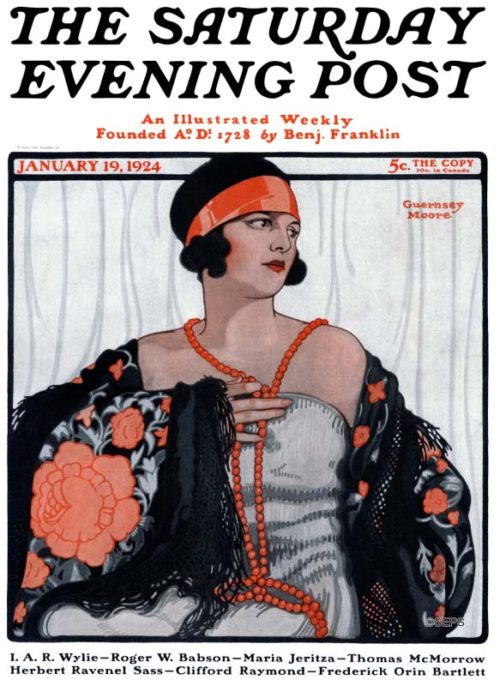
Guernsey Moore
January 19, 1924
This is the last cover (of 63) that Guernsey Moore painted for the Post. The cover is representative of his heavily outlined Arts and Crafts style. The large, brightly-colored flowers once again borrow from motifs of the Far East.
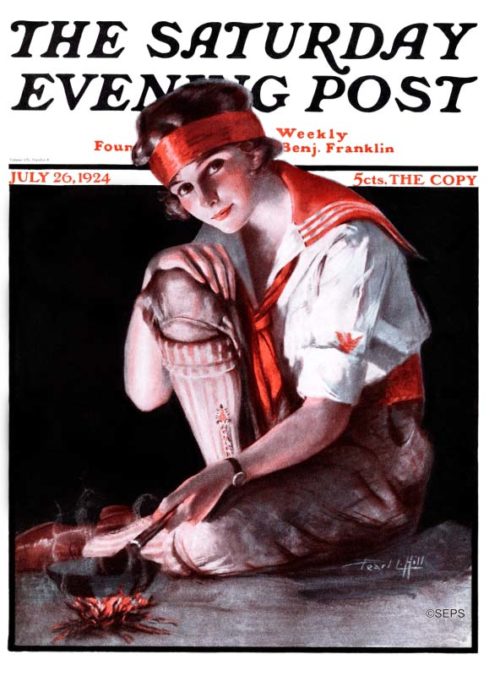
Pearl L. Hill
July 26, 1924
The Camp Fire Girls was created in 1910 as a sister organization to the Boy Scouts of America. Their purpose was to provide outdoor activities for girls. Artist Pearl Hill may have taken some liberties with her painting, as this image seems to depart from the loose, dark bloomers that were part of the uniform in the ‘20s.

James Calvert Smith
January 17, 1924
This cover by James Calvert Smith features an iconic fashion item from the era: the cloche hat, which was invented in 1908 by milliner Caroline Reboux. In addition to covers for the Post and other magazines, Smith also painted murals in the American Museum of Natural History in New York and the Library of Congress.

Ellen Pyle
August 7, 1926
Ellen Pyle painted 40 covers for the Post, and this wise-eyed and not-quite-smiling woman was typical of her portraits. Pyle wrote, “The girl I am most interested in painting is the unaffected natural American type, the girl that likes to coast and skate in winter, who often goes without her hat, and who gets a thrill out of tramping over country roads in the fall.”
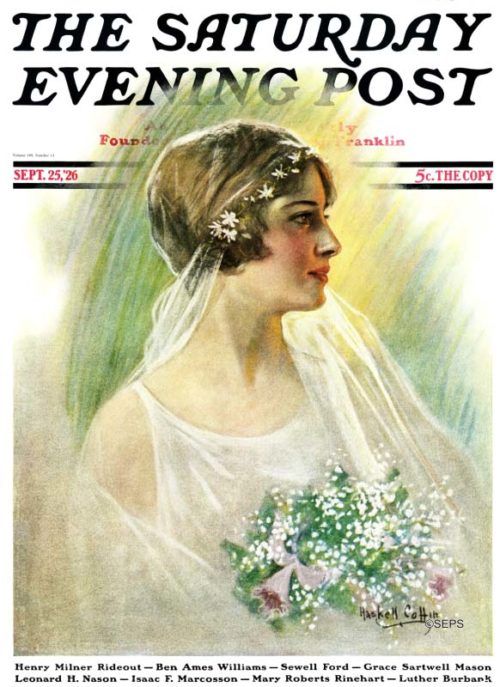
W.H. Coffin
September 25, 1926
William Henry Coffin specialized in images of women, and his Post covers often featured women grasping a pet, book, fan, bouquet, or other object. This was his only picture of a bride. Her close-fitting veil perfectly captures the style of the era.
Become a Saturday Evening Post member and enjoy unlimited access. Subscribe now
